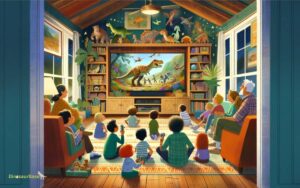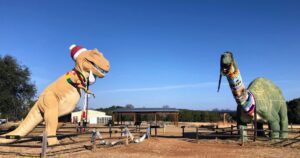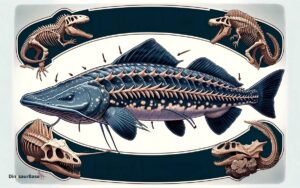7 Cutest Dinosaur Species That Will Melt Your Heart
The Parasaurolophus with its duck-billed cuteness and the tiny, feathery Microraptor rank among the most adorable dinosaurs. Others include the charming Protoceratops and the playful Leaellynasaura, enchanting with their small stature.
Dinosaurs, the prehistoric titans that once ruled the Earth, aren’t typically synonymous with cuteness.
Yet, amidst these colossal creatures roamed species whose features could warm the heart of any modern-day animal lover.
The study of paleontology has uncovered dinosaurs that defy the ferocious stereotype, revealing forms and sizes that elicit more “awws” than awe.
Our fascination with these extinct beings often focuses on the fierce Tyrannosaurus rex or the towering Brachiosaurus, but it’s time to shine the spotlight on their lesser-known, endearing counterparts.
These seven species, with their unique, heart-melting characteristics, reveal a softer side of the Mesozoic era and offer a fresh, charming perspective on the dinosaur lineage.
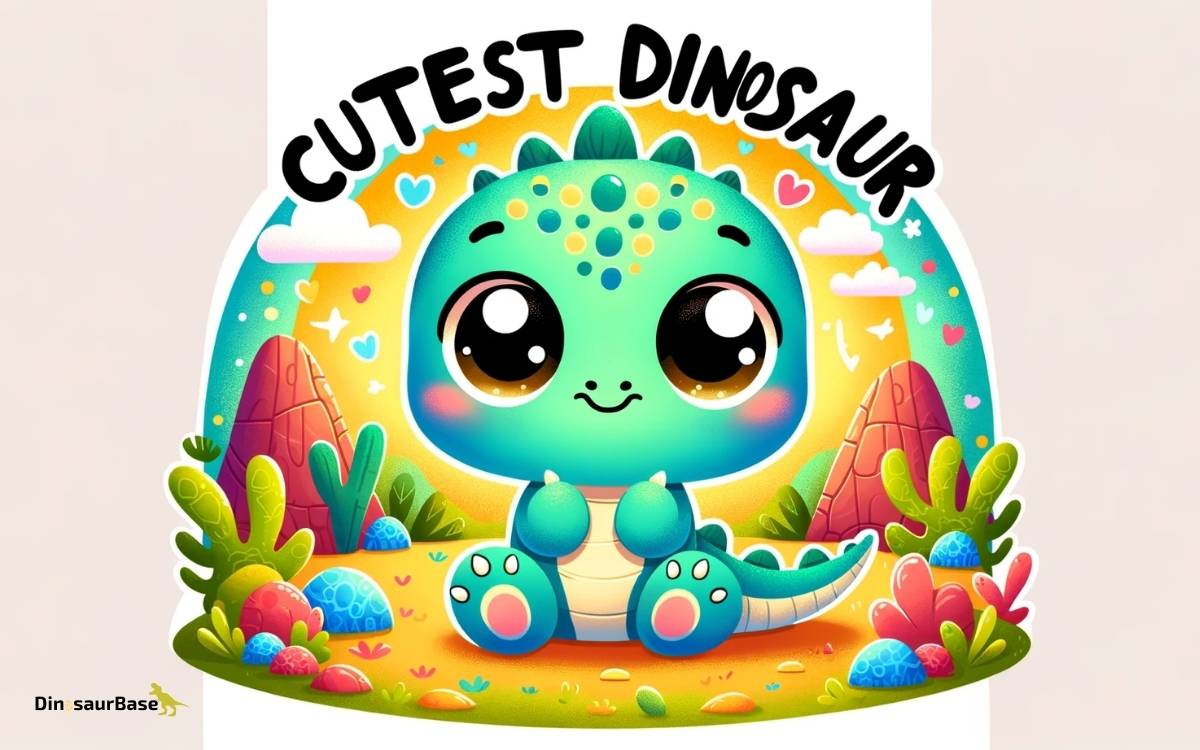
Introduction To Adorable Prehistoric Creatures
Think of dinosaurs and you might picture fierce creatures. Yet, amidst them thrived some of the most charming species that have ever walked the Earth.
These cute dinosaurs stir up our imaginations and show us a softer side of the prehistoric world. Let’s travel back in time to meet the cutest dinosaur species you wish you could cuddle with.
Why Dinosaurs Fascinate Us
Dinosaurs capture our hearts and minds. Scientists piece together fossil clues to uncover their secrets. Kids and adults alike marvel at their size and power.
They are stars of stories and films. But did you know? Some dinosaurs were not only mighty but also incredibly heartwarming.
Defining Cuteness In The Dinosaur Era
Cuteness in the dinosaur world might sound like an odd concept. Yet, some dinosaur species had traits we’d find unquestionably cute today.
Big eyes, small sizes, fluffy feathers, and baby-like proportions. These features tug at our heartstrings. It’s like they leaped straight out of a storybook.
Prepare to meet the little-known dinos that would have warmed the hearts of anyone lucky enough to see them alive.
- Psittacosaurus: Known as the ‘parrot lizard’, with its beak-like mouth and innocent gaze
- Leaellynasaura: A tiny herbivore with big, round eyes
- Microceratus: Petite with cheeky frills
- Oviraptor: The ‘egg thief’ with a quirky look
- Protoceratops: Small but mighty with charming features
- Micropachycephalosaurus: Tiny but tough, with a lovable dome head
- Yi Qi: A flying dino with a sweet, bat-like appearance
Each of these dinosaur species offers a glimpse into a world where cuteness and dinosaurs coexisted.
Can you imagine the endearing interactions and blushing scenes they might have created? With adorable roars instead of fearsome ones, let’s continue to explore these prehistoric sweethearts in the next sections.
Microraptor: The Four-winged Dainty Dino
Amid the adorable ancient giants, the Microraptor stands out with its quartet of wings. This petite dinosaur, reminiscent of a star in prehistoric skies, charms with its unique, feathery silhouette.
The Microraptor might not be as famous as the mighty T-Rex, but its charm is undeniable. This small dinosaur had not two, but four feathered wings, making it one of the most unique creatures from the past.
Miniature Size And Graceful Wings
Despite its fierce dinosaur relatives, the Microraptor was quite petite. Its tiny stature made it more approachable:
- Length: 2-3 feet from head to tail
- Weight: Similar to a modern-day house cat
Its delicate wings could have helped it glide between the trees, roaming the ancient skies with ease.
The Feathered Beauty of the Cretaceous
The Feathered Beauty Of The Cretaceous
The Microraptor boasted a brilliant plumage. Imagine a bird, but way back in time! These were its dazzling features:
- Color: Gleaming with iridescence, similar to a crow
- Use: Perhaps for display or to stay warm
Scientists believe its feathers shone in the sun, enchanting all who set eyes on it.
Psittacosaurus: The ‘parrot Lizard’ Charm
Imagine a dinosaur that could warm your heart at first glance: meet the Psittacosaurus. Known as the ‘Parrot Lizard’, this adorable creature roamed the earth millions of years ago.
Yet today, they’re stealing hearts with their quaint charm. Let’s delve into what makes the Psittacosaurus so endearing!
Distinctive Beak And Playful Appearance
First off, the Psittacosaurus had a unique, parrot-like beak, aptly giving it its nickname. This distinctive feature isn’t just intriguing; it’s downright cute. It’s easy to see why they’re often depicted with a friendly demeanor in children’s books and movies.
With a small, bipedal frame and a tail that fanned out, the Psittacosaurus could easily be a character in a cartoon!
The Social Behavior Of Psittacosaurus
Social and friendly, the Psittacosaurus wasn’t a lone wanderer. Paleontologists have dug deep into their history and found that these dinosaurs liked to hang out in groups. Think of them as the extroverts of the Cretaceous period.
Their plant-based diet meant they likely weren’t terrifying their neighbors, either. So, not only were they cute, but they also had the personality to match!
Whether it was their beak or their behavior, Psittacosaurus had an undeniable charm that continues to fascinate.
These ‘Parrot Lizards’ remind us that prehistoric times weren’t just about the fierce giants but also about the petite darlings that roamed Earth’s ancient landscapes.
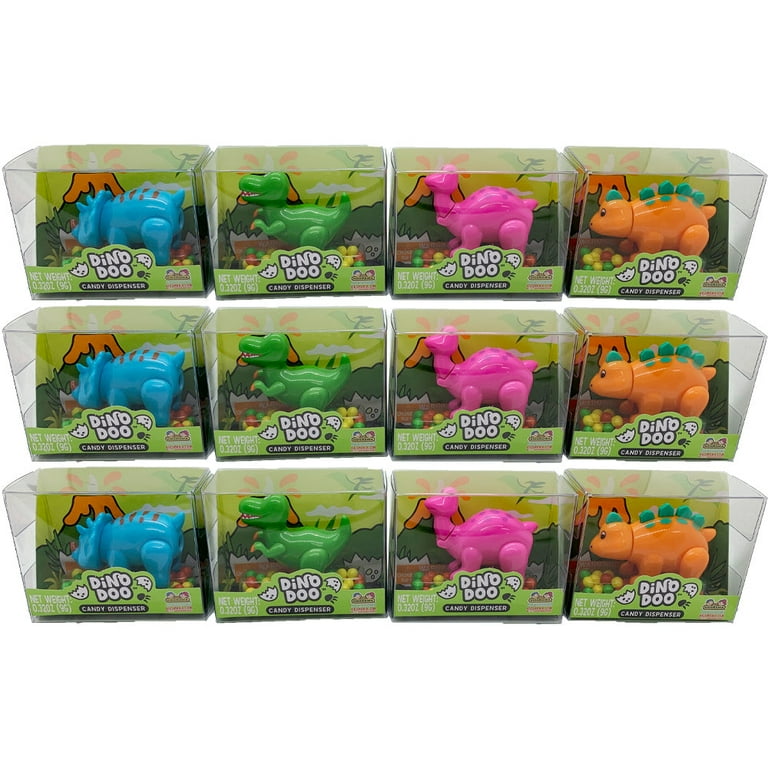
Credit: www.walmart.com
Leaellynasaura: The Small And Sociable
Meet the Leaellynasaura, a dinosaur whose charm is as big as its name is hard to pronounce. Despite its dinosaur kin, this little creature could easily become your new favorite.
With a name meaning “dawn” and dedicated parents, these dinosaurs were more than just survivors.
They showed the world that size isn’t everything. Let’s dive into the life of this endearing creature from the past.
The Endearing Lifestyle Of A Polar Dinosaur
The Leaellynasaura lived in ancient Australia, which was much closer to the South Pole back then. Imagine tiny dinosaurs huddling together in the cold!
- Cold, dark winters lasted months in its polar home.
- Leaellynasaura stayed social to survive the cold.
- They huddled for warmth and to fight off predators.
These creatures were not loners. They cherished company and possibly moved in herds.
Adaptive Features To Harsh Climates
Leaellynasaura adapted to its unique home. It had special features to live in the cold.
| Feature | Function |
|---|---|
| Large eyes | Helped see during long, dark winters |
| Long tail | Balance on slippery ground |
| Small size | Easier to keep warm |
Warm-blooded? Some scientists think so because of its rapid growth. This would be a big deal for dinosaur standards.
Protoceratops: The Cute Cretaceous Herbivore
Imagine a dinosaur as cute as a puppy. That’s the Protoceratops for you. These charming creatures roamed Earth over 70 million years ago. But don’t let their age fool you. Their cuteness still captures hearts today!
The Lovable ‘First-Horned Face’
The Lovable ‘first-horned Face’
Protoceratops, meaning ‘first-horned face’, is famous for its adorable appearance. It was a small dinosaur with a large frill on the back of its head. Its beak-like mouth nibbled on plants. This dinosaur was not much larger than a modern sheep.
Family Life and Nesting Habits
Family Life And Nesting Habits
Protoceratops took family seriously. Paleontologists found nests with eggs, showing how they cared for their young. These nesting sites give us a glimpse of their family life.
- Nesting: Their nests were circular and likely made from vegetation.
- Eggs: Multiple eggs were laid, hinting at a dedicated parental investment.
- Protection: The location of nests suggests they chose safe spots to raise their young.
Maiasaura: The Gentle ‘good Mother Lizard’
Imagine a dinosaur that takes care of its babies just like humans do. Meet the Maiasaura, a dinosaur known for its loving nature. Its name means “good mother lizard”.
This gentle creature once walked the Earth millions of years ago, warming hearts with its nurturing ways.
Nurturing Behavior Winning Hearts
The Maiasaura made dino history with its motherly love. These giants roamed in herds and looked after their young in colonies, similar to birds today. The care they gave changed our view on how dinosaurs lived and loved.
The Fossil Evidence Of Parental Care
Scientists discovered nests with eggs, hatchlings, and young dinosaurs all together. This rare find in Montana proved Maiasauras stayed with their young post-hatching. They provided food and protection until their babies could fend for themselves.
This fossil evidence shows a softer side to the Jurassic era, highlighting a unique bond between parent and child.
| Age | Description |
|---|---|
| Egg | Mother Maiasaura incubated her eggs |
| Hatchling | Young needed care and feeding |
| Juvenile | Kids grew up with parents’ protection |
Hypsilophodon: The Fleet-foot, Cheerful Herbivore
Imagine a small, lively dinosaur hopping around ancient forests with grace. Hypsilophodon, a name that means ‘high-ridged tooth’, brings that image to life.
This adorable dinosaur was a two-legged herbivore, perfect for those who adore less intimidating, friendly-faced prehistoric creatures. Let’s explore why the Hypsilophodon, despite its long name, is a big contender for the cutest dinosaur ever.
The Agile And Youthful Dino
Hypsilophodon was quick on its feet. With hind legs built for speed and agility, it could have dashed through the underbrush, nibbling on plants.
Scientists believe its athletic frame once skipped across what is now Europe’s landscape. Imagine a dinosaur that could play tag in the ancient forests!
Characteristics That Spark Interest
- Size: Comparable to a large turkey, Hypsilophodon was a dinosaur pocket-sized wonder.
- Teeth: Its teeth were perfect for a plant-based diet, made to grind up tough leaves and twigs.
- Social Behavior: Possibly lived in groups which suggest it enjoyed the company of its dino-friends.
- Defensive Tactics: It had a long tail for balance, helping it swiftly maneuver away from predators.
A chart illustrating the cute and quirky attributes of the Hypsilophodon:
| Characteristic | Description |
|---|---|
| Size | Small and manageable, easy to picture as a playful companion. |
| Speed | Could outrun the slowest predators, a testament to its agility. |
| Sociability | Enjoyed the company of its peers, a social butterfly of the dinosaur era. |
| Diet | Strictly plants, no scary teeth here. Friendly for all ages. |
Oviraptor: The Misunderstood Elegance
Imagine a world where dinosaurs win hearts with cuteness rather than fierce roars. Within this prehistoric kingdom, the Oviraptor emerges as a charming enigma.
Once labeled as an egg thief, this dino has a tale that deserves the spotlight for its grace rather than misdeeds.
Revealing The True Nature Of The ‘egg Thief’
The name Oviraptor means ‘egg thief’, but recent studies tell a different story. Scientists now think that the Oviraptor guarded its eggs, not stole them.
Bones found in a nest show that the Oviraptor was misunderstood. This finding warms hearts and changes minds. Imagine these creatures as caring parents, sitting tenderly atop their eggs, waiting for the birth of their young ones.
Aesthetic Features Of Oviraptor
Aside from its compelling story, the Oviraptor’s looks are simply adorable. Picture a bird-like creature with a toothless beak and a stylish crest. This fashion-forward dinosaur rocked a crest that might have been used for display.
As if tailored by nature itself, their feathers could have ranged in brilliant patterns and hues. It’s easy to fall for their charismatic appearance and wish for a time machine to see them in their prime.
- Beak: Toothless and parrot-like, perfect for a gentle touch.
- Crest: A fashionable head display, likely used for attraction.
- Feathers: Potentially vivid and patterned for the Jurassic catwalk.
The Oviraptor shows us that in the dinosaur kingdom, beauty and tenderness not only existed but thrived.
Through its elegance and transformed image, this dino captures hearts and fascinates minds. It stands as a reminder that even in ancient times, there was gentleness amidst the giants.
Closing Thoughts On Prehistoric Cuteness
Our journey back in time reveals dinosaurs’ not-so-fierce side.
Imagine miniature dinos with fluffy feathers or big-eyed babies peeking from their nests.
Their cuteness transcends time, sparking joy and curiosity in all ages.
The Impact Of These Species On Pop Culture
Beyond fossils, cute dinosaurs have conquered hearts through movies, books, and toys.
Children’s rooms worldwide feature dino-themed décor, proving their timeless appeal.
Their influence is evident, from blockbusters to fashionable prints.
- Animated films bring them to life
- Stuffed toys provide snuggly companions
- Video games offer immersive adventures
- Educational books make learning fun
Where To Learn More About Adorable Dinosaurs
Fascinated by these ancient cuties?
Libraries and museums offer a wealth of knowledge.
Science websites feature detailed articles and images.
Hands-on learning awaits at nearby science centers and exhibitions.
| Resource | Type | What You’ll Find |
|---|---|---|
| Natural History Museums | Exhibits | Real Fossils, Dino Models |
| Children’s Books | Literature | Colorful Illustrations, Fun Facts |
| Online Encyclopedias | Web | Articles, Interactive Timelines |
| Science Centers | Hands-on | Fossil Digs, Animatronics |
Frequently Asked Questions Of 7 Cutest Dinosaur Species That Will Melt Your Heart
What Is The Cutest Dinosaur To Exist?
The cutest dinosaur is subjective, but the Psittacosaurus, resembling a parrot, often gets this title for its charismatic appearance.
What Is The Most Loving Dinosaur?
The most loving dinosaur is often considered to be the Maiasaura. This dinosaur is known for its nurturing behavior and evidence of caring for its young, demonstrating strong parental care during the Cretaceous period.
What Was A Cute Dinosaur?
The dinosaur species Psittacosaurus is often considered cute due to its parrot-like beak and small stature.
What Is The Most Attractive Dinosaur?
The Velociraptor, with its sleek feathers and agile build, often captivates audiences as the most attractive dinosaur. Its iconic appearance in popular media enhances its appeal.
Conclusion
Exploring the world of prehistoric cuteness, we’ve journeyed through the land of the adorable. From the tiny but mighty Microraptor to the gentle giant Sauropelta, these seven dino darlings have captured our imaginations.
Remember, whether fierce or fluffy, dinosaurs continue to fascinate and remind us of nature’s boundless creativity.
Embrace your inner paleontologist and keep the fascination alive: who knows what charming creatures await discovery!

